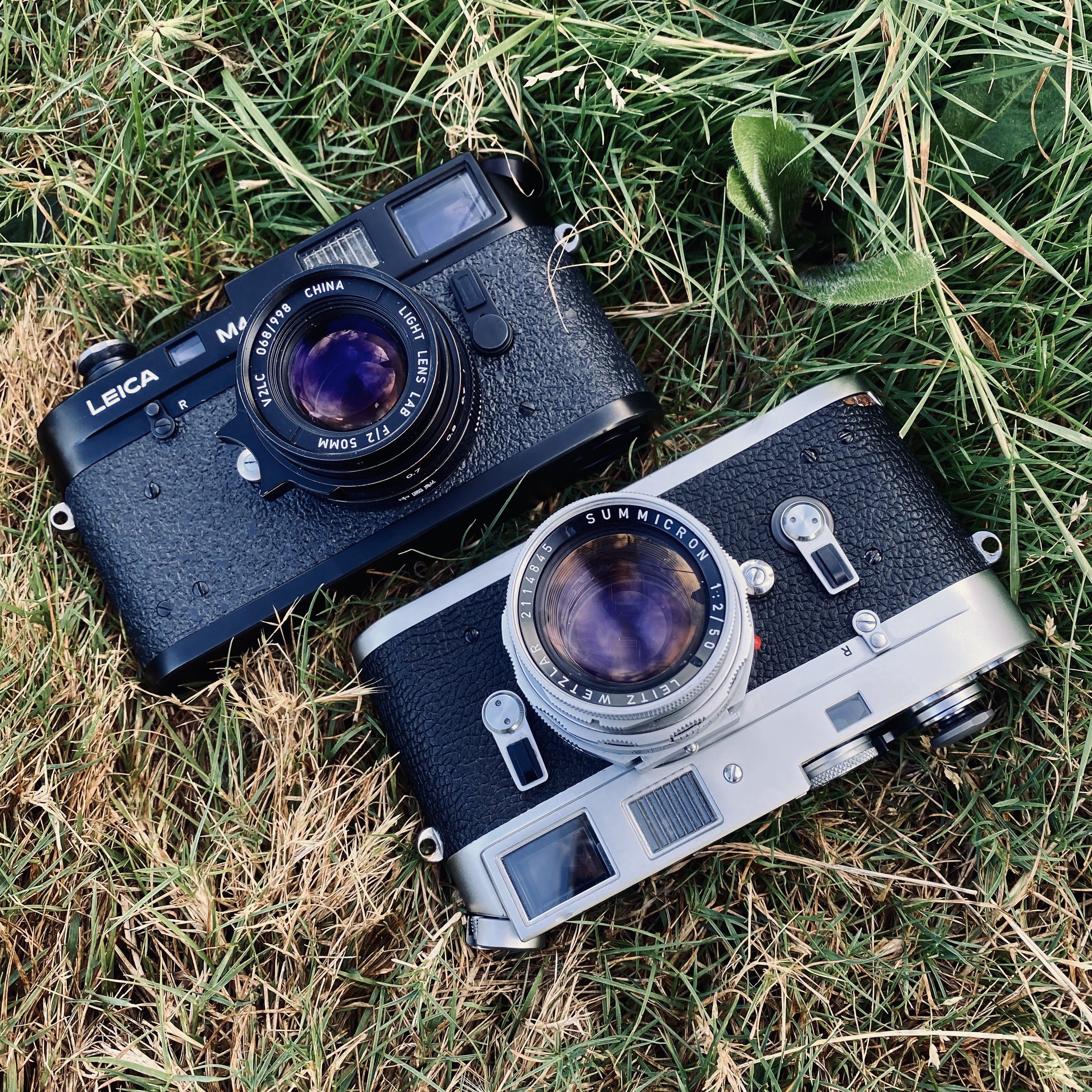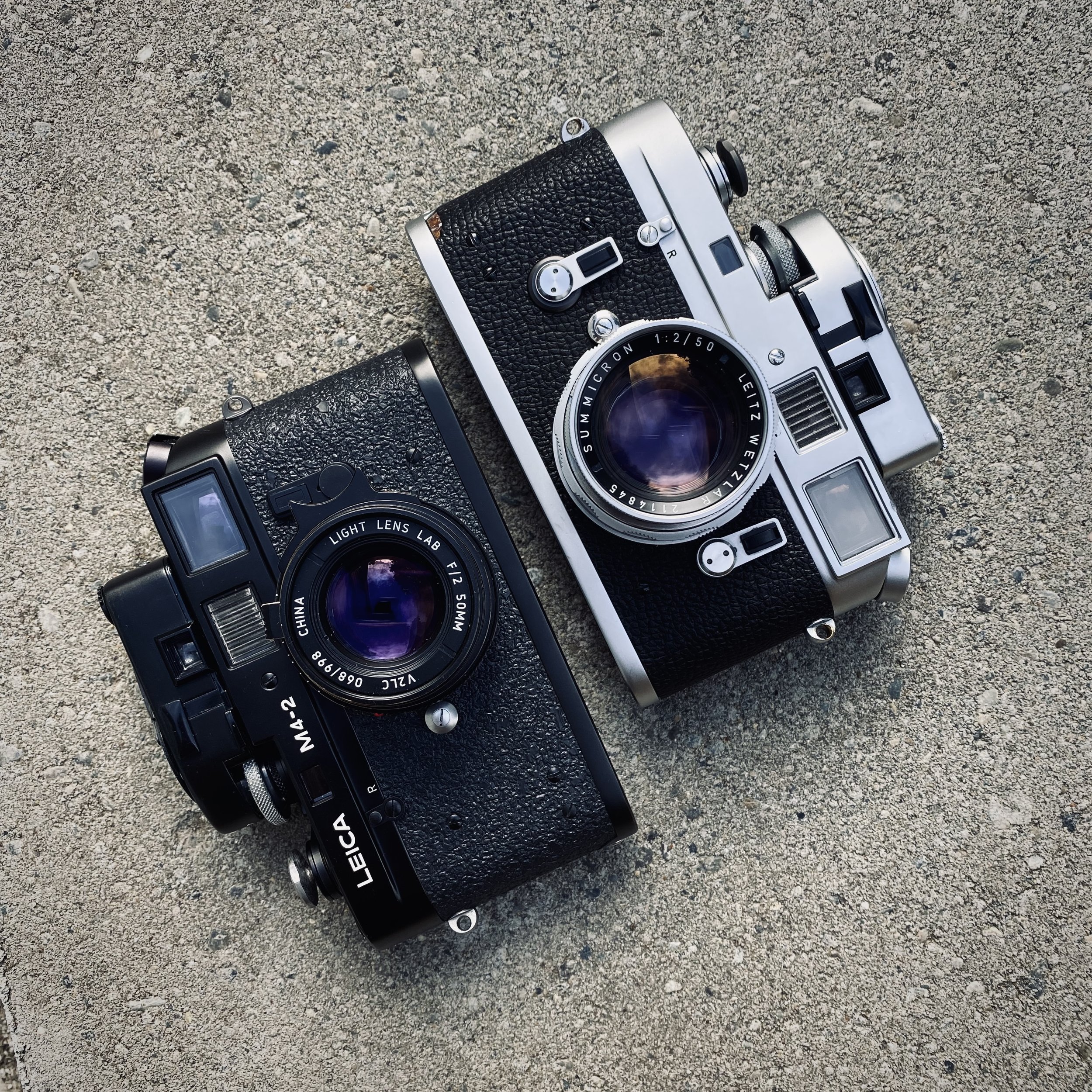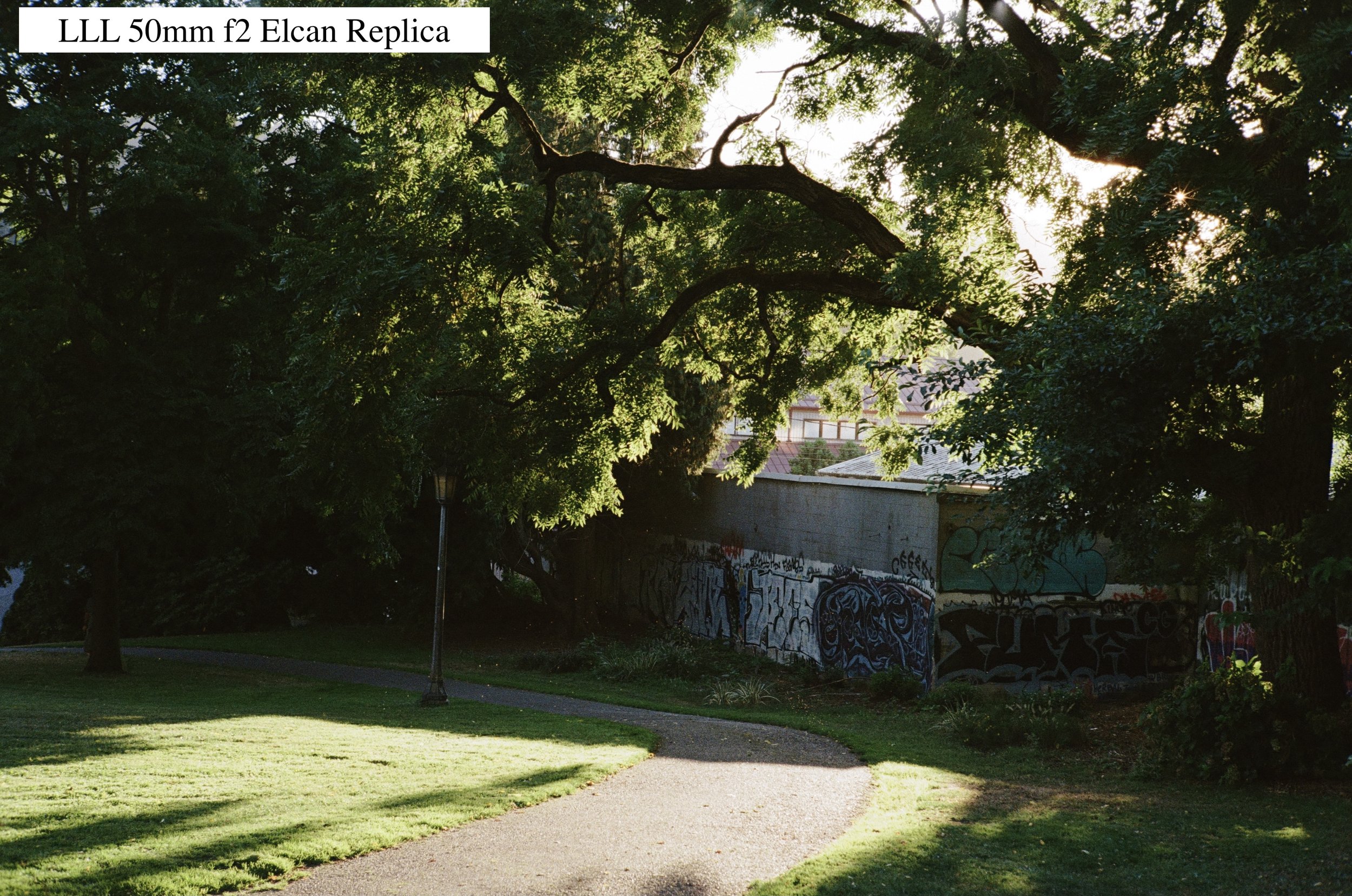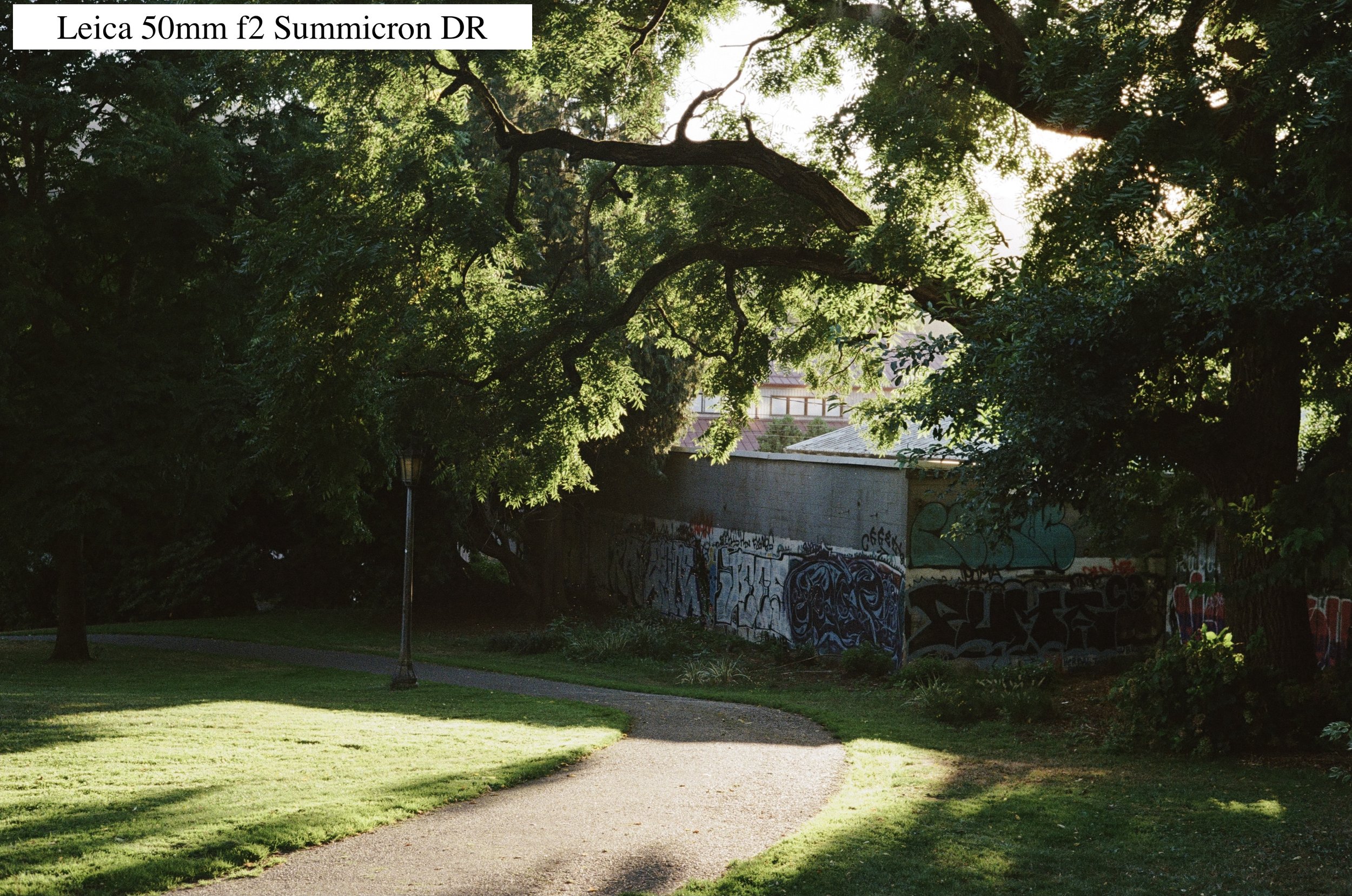Light Lens Lab 50mm f2 Elcan Replica Review - vs Leica 50mm f2 Summicron DR
The Light Lens Lab 50mm f2 Elcan is the second Leitz replica optic created by the Chinese lens maker, following their successful recreation of the 35mm f2 8-Element Summicron. This LLL 50mm f2 is a rebuild of the Leitz 50mm f2 Elcan, an extremely rare lens that Leitz Canada produced for a US Military contract in the 1970s.
Delivered as a set with a special version of the Leica M4 under the designation KE-7A, the 50mm f2 Elcan was designed by famed German optician Dr. Walter Mandler. The performance of the contemporary Leitz 50mm f2 Summicron lens exceeded the requirements of the military contract, so Mandler designed the Elcan as a less expensive replacement.
Essentially a simplified Summicron, the Elcan is constructed with 4 optical elements in 4 groups, as opposed to the 7-element Summicron. The elements in the Elcan are all air-spaced (not cemented) to improve durability and impact resistance. Leitz was able to achieve the optical performance necessary with fewer lens elements by using special LaK9 glass containing Lanthanum, a radioactive element with exceptional optical properties. Fewer elements also allowed Leitz to shorten the barrel of the lens considerably compared with the Summicron. In total, Leitz Canada delivered 500 KE-7A kits containing 50mm f2 Elcan lenses.
Side-by-side, the Elcan is noticeably more compact than the Summicron.
The extreme rarity of KE-7A cameras and 50mm f2 Elcan lenses puts them firmly out of reach for all but the most connected Leica collectors, which is part of why we were so excited to see this recreation. The original 50mm f2 Elcan has a very distinct set of optical qualities deriving from its unique construction. The high refractive index of the Lanthanum glass gives the Elcan excellent center sharpness, but the 4-element construction limits corner resolution compared with the 6-element Summicron. This combination of high contrast and detail in the center with less corrected edges lends the original Leitz Elcan a "3-D" pop when shot wide open.
The LLL 50mm f2 Elcan replica achieves impressive optical performance, especially considering its relatively simple 4-element "Ultra-Astigmat" design. Stopped down, it produces sharp and contrasty images, with the corners remaining less highly resolved than the center. Color is punchy, with a slightly warm cast apparent from the lens coatings.
Shot wide open, the LLL 50mm f2 Elcan comes into its own. Subjects are separated dramatically from the background, and the high center sharpness provides detail for the eye to rest on. Bokeh quality is unique: the LLL 50mm f2 renders softly defined, very circular orbs that provide a delicate look without the field curvature "swirl" seen in so many vintage lenses at max aperture. Overall, the LLL 50mm f2 Elcan is a very capable optic that offers an especially dimensional character with its center-weighted sharpness and smooth bokeh.
The Light Lens Lab 50mm f2 Elcan Replica is an impressive lens in its own right. But how does it compare head-to-head with a genuine Leica lens built during the peak era of optical-mechanical engineering? To find out, we shot the LLL 50/2 against a Leica 50mm f2 Summicron DR. Constructed between 1956-1968, the 50/2 DR replaced the original collapsible Summicron to become Leica’s new benchmark for optical performance.
Featuring 7 elements in 6 groups and a 10-blade aperture, the Leica 50mm f2 Summicron DR derives its name from a “Dual Range” focusing helicoid that allows for close focusing down to 0.5 meters with special parallax-corrected goggles that mount to the top of the lens. Crucially, the 50/2 DR is widely considered to be one of the finest 50mm lenses created in any era, with optical performance that meets or exceeds that of the later v3-v5 Summicron lenses. The Leica 50mm f2 Summicron DR’s sharpness and flatness of field are improved on by only the latest Leica ASPH and APO optics.
To test the Light Lens Lab 50mm f2 Elcan Replica against the Leica 50mm f2 Summicron DR, we loaded a Leica M4 and M4-P with Kodak Ultramax 400 and shot the same subjects side-by-side. With three additional lens elements and the pedigree of the Leica name, the 50/2 DR appears to have an advantage on paper, especially as the Elcan was essentially designed as a reduced-cost Summicron. However, the LLL 50/2 has the benefit of being a brand-new lens constructed 60 years later with modern techniques. Both lenses can be purchased between $1000-$1500 USD, making them natural competitors in today’s market. So, how do they stack up?
Stopped down in bright light, both lenses are fine performers. The Leica has a slight advantage in contrast.
The LLL 50/2 and Leica 50/2 DR are very sharp optics. In real-world photography neither lens has a significant edge, although the Dual Range’s slightly higher contrast gives it more apparent sharpness.
The Leica 50mm f2 Summicron DR exhibits a warmer color cast, whereas the LLL 50mm f2 Elcan Replica has a slight green tinge.
In this scene, the Leica 50/2 DR rendered the extreme highlight as a slightly flared blur. The LLL 50/2 shows similar performance with the addition of a 10-pointed sunstar.
In these shots, we stress-tested the lenses for flare characteristics by shooting them directly into the sun. Both lenses show two patches of octagonal flare. The Leica 50/2 DR is relatively well-controlled, with faint pink-red flaring — in contrast, the LLL 50/2 exhibits dramatic, edge-defined rainbow ghosting. While this could certainly be used to creative effect, this is one category in which the Leica 50mm f2 Summicron DR outperforms the Light Lens Lab 50mm f2 Elcan.
Moving away from contrast and sharpness into more subjective categories of lens performance, we tested both optics for their bokeh quality. The Leica 50mm f2 Summicron DR has a very distinctive out-of-focus rendering, with pronounced “cat’s-eye” shape and edge outlining that give it a “soap bubble” look. Overall, the bokeh character of the Leica 50/2 DR is quite busy. In contrast, the Light Lens Lab 50mm f2 Elcan produces less defined, half-moon bokeh shapes that create a smoother background texture.
This image is a good example of the defined edge outlining and “cat’s eye” shape that characterizes the Leica 50mm f2 Summicron DR’s rendering. Note also how thin the depth-of-field is at f2 — I slightly missed focus on this portrait of staff member Anna.
The focus accuracy of the LLL 50/2 was spot on mounted to the Leica M4 and M4-2 we tested with. The Elcan’s high center sharpness draws your eye to the center of the frame without pronounced vignetting or “Sonnar swirl” in the bokeh.
Like the Lens Light Lab 8-Element Summicron, the 50mm f2 Elcan replica is full brass and is exceptionally well built and finished. The Elcan exudes quality, with a beautifully damped focusing ring that adjusts easily with the large brass tab. A square "Bart Simpson" tab on the aperture ring adjusts the aperture, which moves in the opposite direction as on other Leica lenses. This can take some getting used to for regular Leica users -- apparently the aperture scale was reversed to match the aperture direction of the Nikon lenses also used by the US Navy.
Mounted to a Leica M body, the 50mm f2 Elcan is impressively compact, featuring a profile more similar to a 35mm lens than a 50mm. The 50mm f2 Elcan replica accepts standard E39 filters and is compatible with original Leitz clip-on lens hoods.
Light Lens Lab has done excellent work in the concept and execution of this replica Elcan lens. Their recreation allows Leica users all over the world to access the unique characteristics of a lens so rare and valuable that few see the outside of a climate-controlled display. That they have done so while maintaining near-Leica levels of build quality at an affordable price is truly impressive.
Here at Blue Moon we will be pleased to offer both the silver chrome and black paint Light Lens Lab 50mm f2 Elcan replica lenses brand new in our store -- please call for availability inquiries as supply is still quite limited or follow this link to see current availability online. As with the 8-Element Summicron, the LLL 50mm f2 Elcan can also be specified in a variety of special paint finishes such as "Safari" and bare brass. We look forward to seeing what Light Lens Lab creates next!
-Gabriel Binder





























